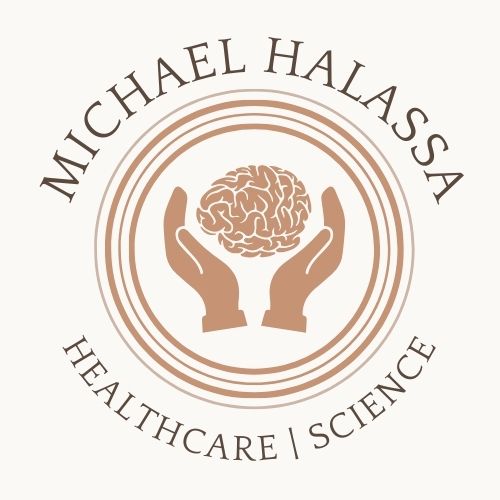I had the privilege of attending and in part organizing the inaugural Innovation in Psychosis Therapeutics Summit in Boston (June 9-11, 2025). This intimate gathering brought together scientists, clinicians and biotech leaders who share a common goal: to finally push psychiatric drug discovery into the 21st century by moving beyond existing preclinical models, expand frameworks beyond dopamine and aspire towards biomarkers embracing the digital revolution.
Day 1: Systems Neuroscience Enters the Room
The summit opened with workshops, one of which I co-organized with Mikhail Kalinichev (Neurosterix Therapeutics, Geneva) and Rouba Kozak (Foundation for the National Institutes of Health). Mikhail brings deep experience from his years at GSK, Lundbeck, and Ipsen, having helped drive clinical development in schizophrenia-related cognitive impairment. Rouba previously led programs developing many neuro/psych relevant compounds with a focus on precision medicine.
Our workshop centered on how systems neuroscience and computational models of circuit dysfunction—what I’ve called “algorithmic circuit psychiatry”—can refine target selection, inform biomarker development, and guide trial design. This perspective has been underrepresented in drug development but is increasingly seen as essential for psychiatric disorders, where symptom clusters often reflect underlying circuit-level failures. See my earlier post here
A central question emerged: Should biomarker development occur during phase 1-3 clinical trials, or wait until after drug approval? The tension reflects the translational challenge in psychiatric drug development. Without predictive biomarkers, clinical trials must balance stringent selection criteria against practical timelines, often leaving drug developers flying blind.
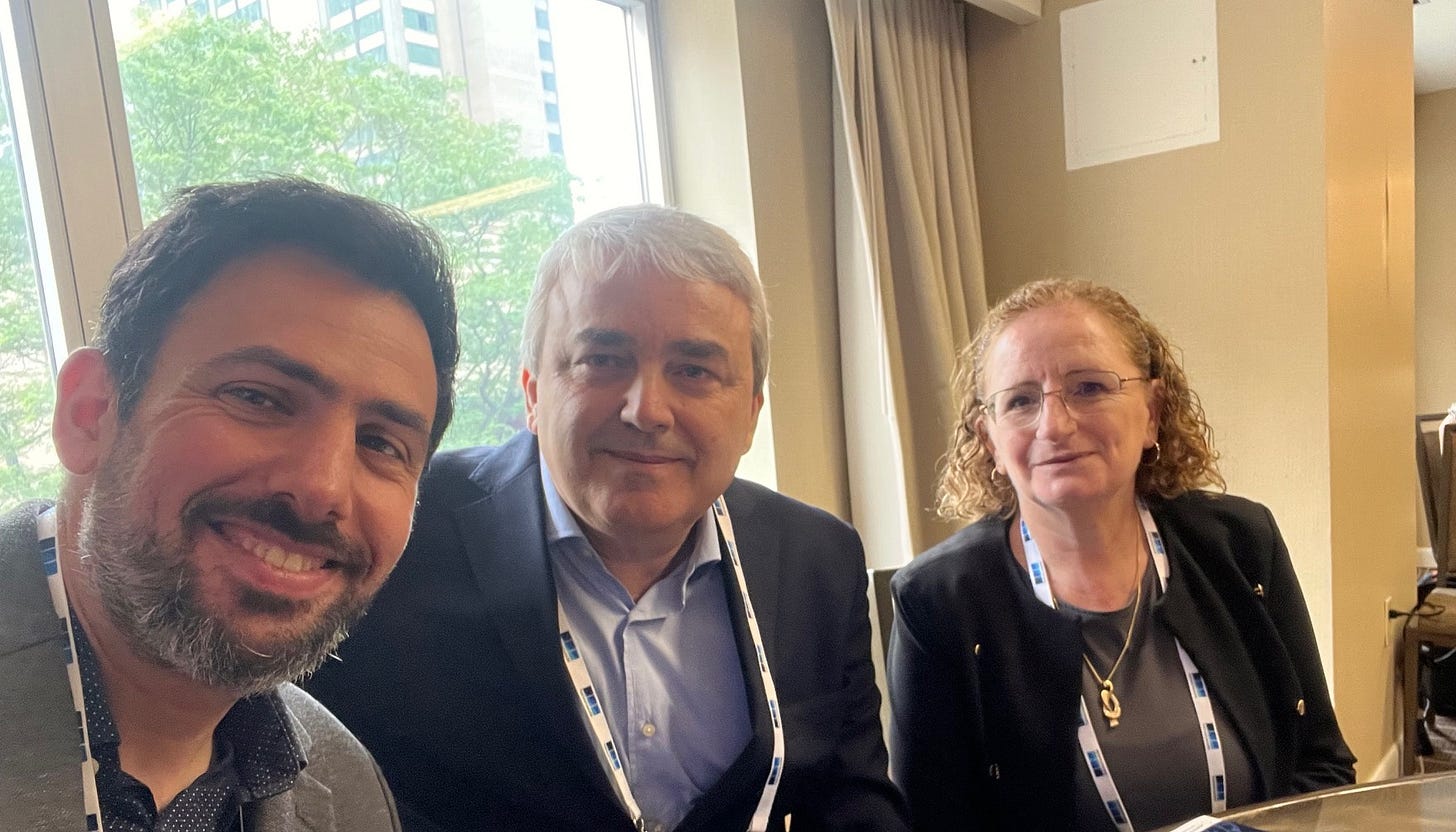
Left to right: Michael Halassa, Mikhail Kalinichev, Rouba Kozak
Following our session, Paulo Lizano from BIDMC led a compelling workshop on integrating patient-centered outcomes, such as quality of life measures, directly into clinical trial endpoints. As the field increasingly recognizes that pure symptom scales may not fully capture meaningful change, incorporating functional and experiential outcomes feels both scientifically valid and deeply patient-centered.
Day 2: The Rise of Muscarinic Agents
By the second day, one theme dominated: muscarinic receptor agonism has become the most exciting frontier in schizophrenia drug development.
The KarXT/Cobenfy Story
Steve Paul delivered a masterful keynote tracing the long and improbable road to Cobenfy (xanomeline-trospium), the most important advance in psychosis pharmacotherapy since clozapine. Originally developed as a derivative of arecoline (from betel nut) for Alzheimer’s, xanomeline’s repurposing for psychosis required remarkable translational persistence.
Key highlights from Paul’s talk:
- Exceptional CNS penetration: A 10:1 brain-to-plasma ratio, highly atypical for psychiatric agents.
- Side effect complexity: Pro- and anticholinergic effects drive the need for more selective muscarinic agents.
- Domain-specific effects: Cognitive gains, especially in working memory and executive function, often decouple from standard PANSS reductions.
Paul emphasized that head-to-head trials against atypical antipsychotics remain a critical next step.
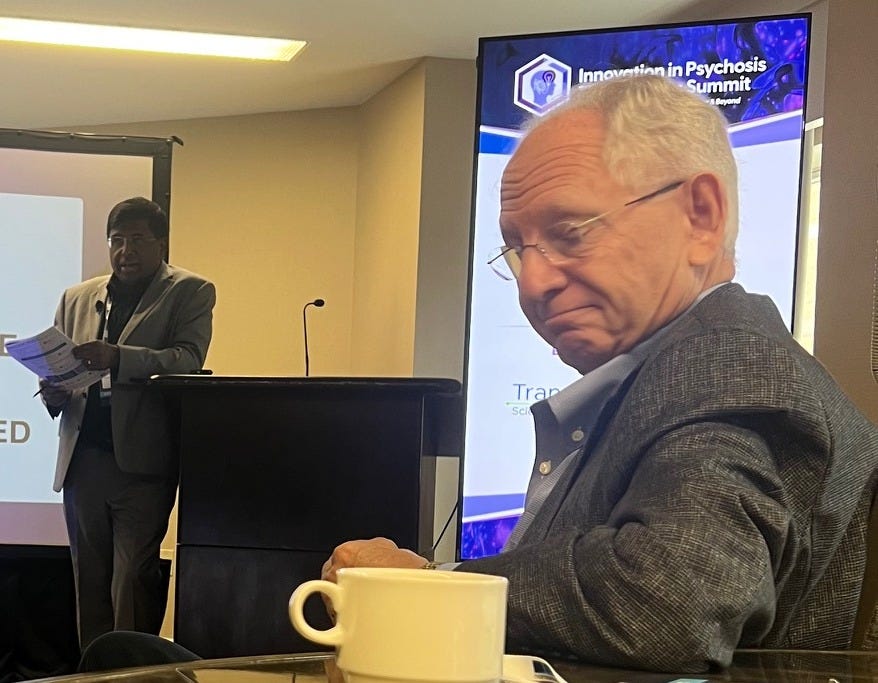
Steve Paul being introduced by Murali Gopalakrishnan
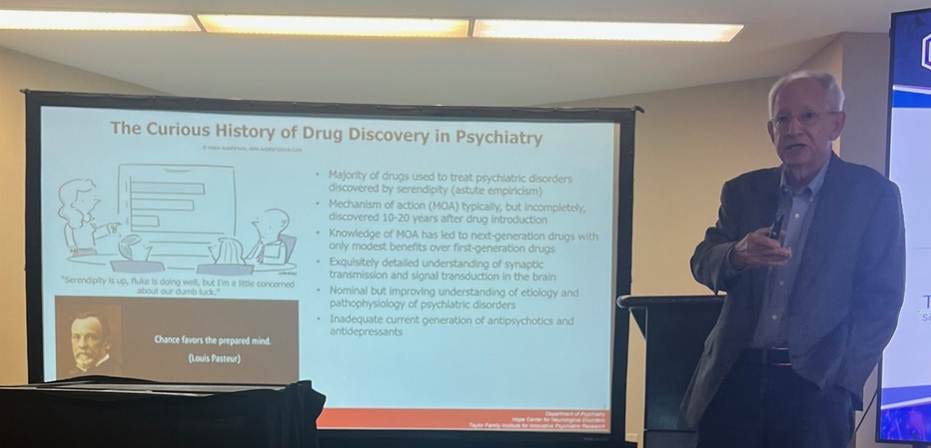
Steve Paul gave an inspiring and forward-looking talk
From Algorithm to $14 Billion
Andrew Miller, one of Karuna’s original R&D leads, described how 7,410 compound combinations were screened through an algorithm-driven selection process, ultimately resulting in the xanomeline-trospium pairing. Starting with just $4,000 (and critical support from the Wellcome Trust), Karuna’s journey culminated in its $14 billion acquisition by Bristol Myers Squibb—a biotech success story that underscores how unconventional mechanisms can lead to transformative breakthroughs.
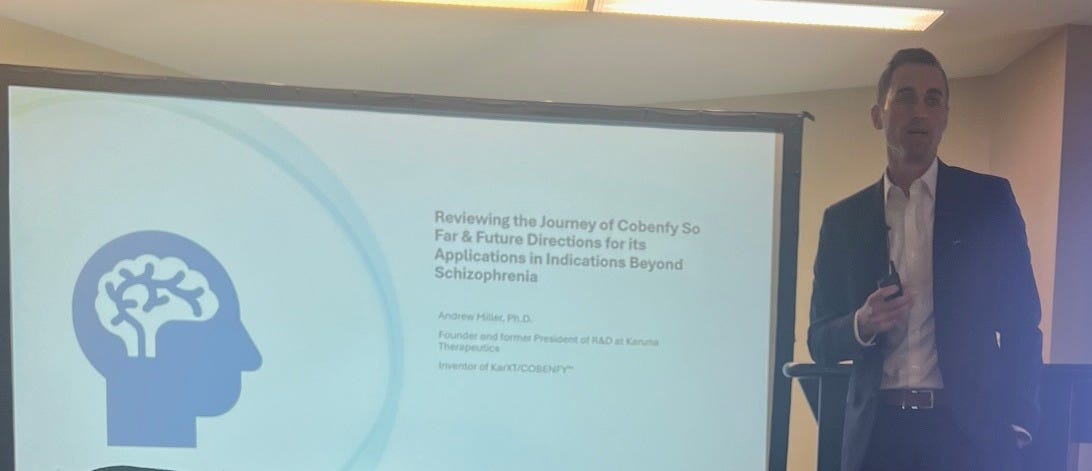
Andrew Miller gave a superb talk about the development of KarXT/Cobenfy
Emerging Themes: Biomarkers, Stratification, and Digital Tools
Throughout the summit, multiple sessions drilled into the next central challenge: how to stratify patients, measure meaningful improvement, and de-risk clinical development earlier with predictive biomarkers.
Biomarkers: The Missing Link—and what’s up with Emraclidine?
The panel featuring Nick Brandon (Neumora), Hadile Ounallah-Saad (Clexio), Larry Park (AbbVie), and Rob Goldman (MapLight Therapeutics) emphasized that lack of biomarkers has plagued psychiatric drug development for decades. AbbVie made clear they are not abandoning Emraclidine despite Phase II setbacks. They attribute the setback primarily to suboptimal trial design rather than flaws in the compound itself—a refreshingly sophisticated view that acknowledges how heterogeneity, endpoint selection, and sample stratification can easily derail psychiatric trials.
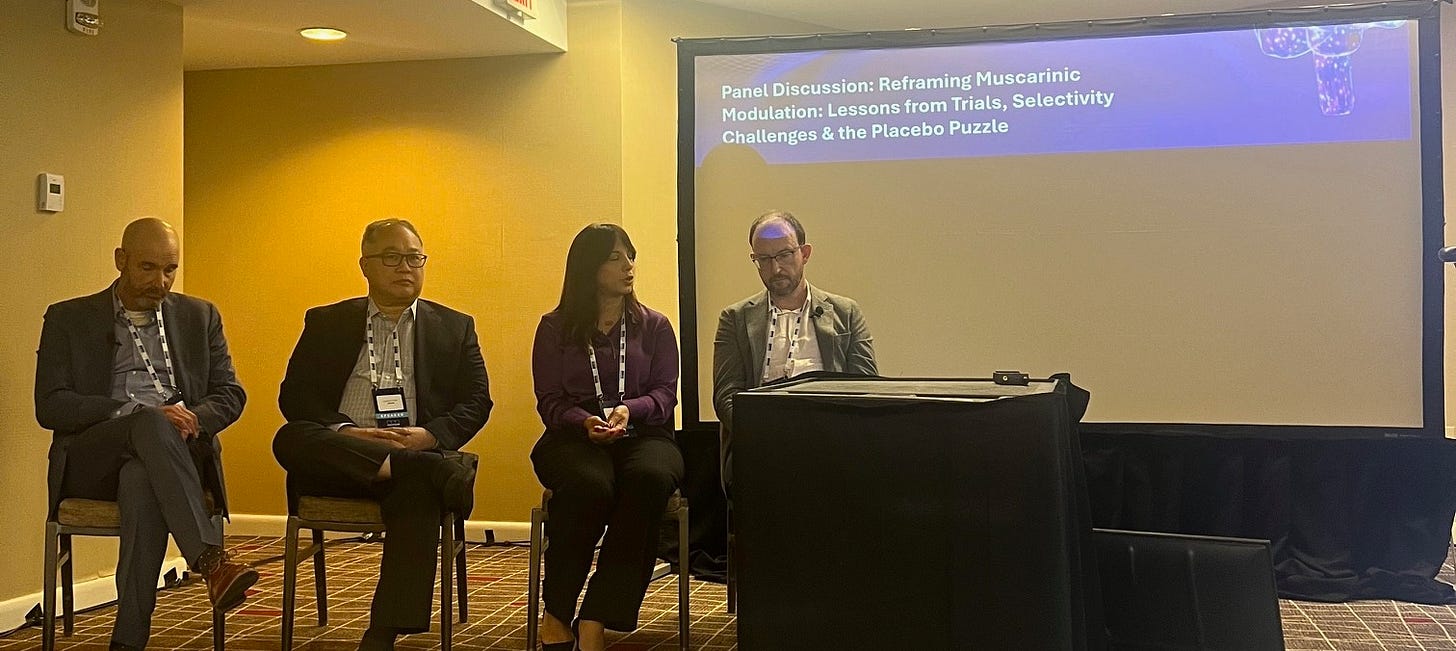
Right to Left: Nick Brandon (Neumora), Hadile Ounallah-Saad (Clexio), Larry Park (AbbVie), and Rob Goldman (MapLight Therapeutics)
I was particularly happy with the opportunity to discuss early clinical real-world experience with Cobenfy. Having the people who developed this compound in the same room was surreal!
Digital Interventions for Negative Symptoms
Click Therapeutics showcased their work on digital interventions targeting experiential negative symptoms. Their augmented reality glasses, designed to enhance social salience during simulated interactions, represent a highly innovative, non-pharmacological circuit intervention.
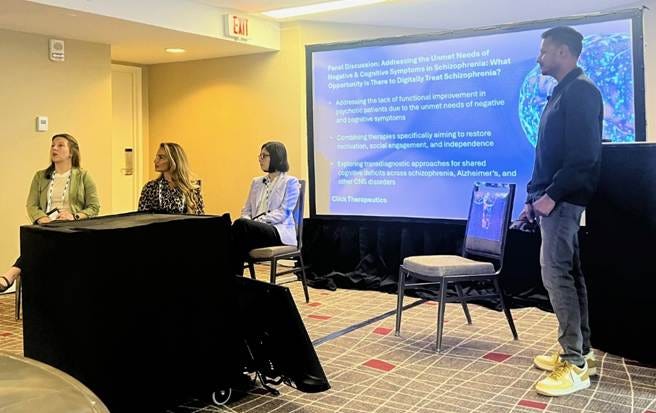
The wonderful click team
I had particularly rewarding conversations with Click’s CMO, Shaheen Lakhan, about converging digital therapeutics with systems neuroscience. We’re now collaborating on a forthcoming article about the future of inpatient psychiatry, combining digital augmentation with circuit-level mechanistic frameworks. Stay tuned!
Novel Biology: Retroviruses & Neuroplastogens
- Jonathan Javitt presented provocative data implicating endogenous retroviral elements (HERV-W-ENV) in schizophrenia pathophysiology—a reminder that viral mechanisms may still yield unexpected insights.
- Rajiv Agrawal (Deluxe Therapeutics) introduced DLX-2270, a neuroplastogen targeting synaptic vesicle protein 2A density. While neuroplasticity-based interventions (e.g., ketamine in depression) have gained traction, their application in psychosis remains early-stage.
Long Acting Injectables (LAIs) and Early Intervention
Hannah Brown delivered an excellent talk on the value of long-acting injectables (LAIs) in first-episode psychosis, referencing mirror-image study designs like PRELAPSE. Reconnecting with Hannah—whom I trained alongside in residency—was a highlight, and her combination of methodological rigor and clinical pragmatism was outstanding.
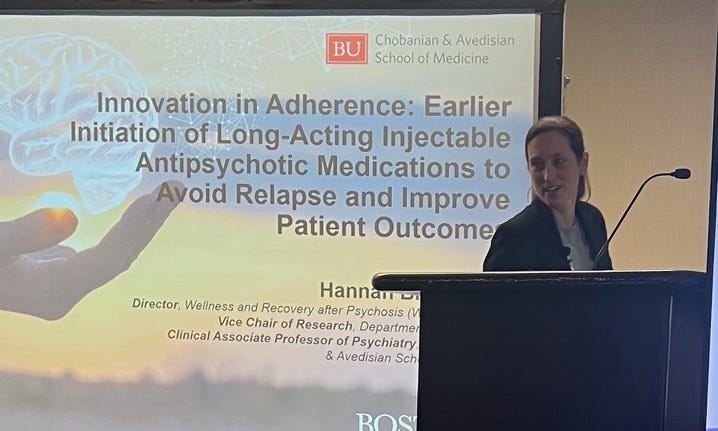
Hannah Brown did a masterful job at emphasizing the importance of LAIs
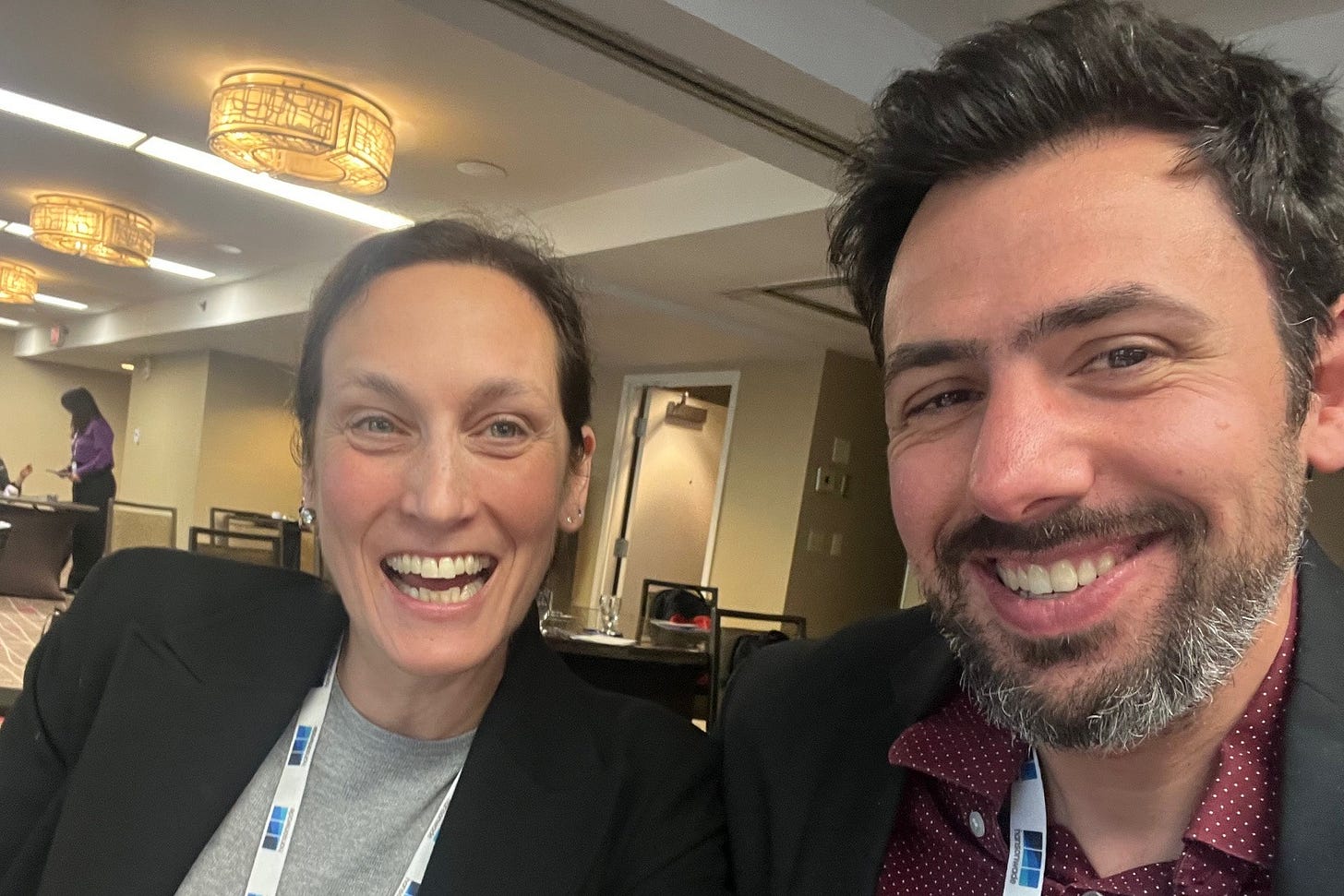
Was great to connect after 12 years!
The Takeaway: A Field at Inflection Point
The closing day featured Hadile Ounallah-Saad’s exceptional talk on developing an M1/M4 agonist (CLE-905) with different properties than Xanomeline and one that may not need a peripheral antagonist like trospium! If this ends up panning out in human trials, it will be game-changing and will give us a shot at a muscarinic LAI! Go Clexio!
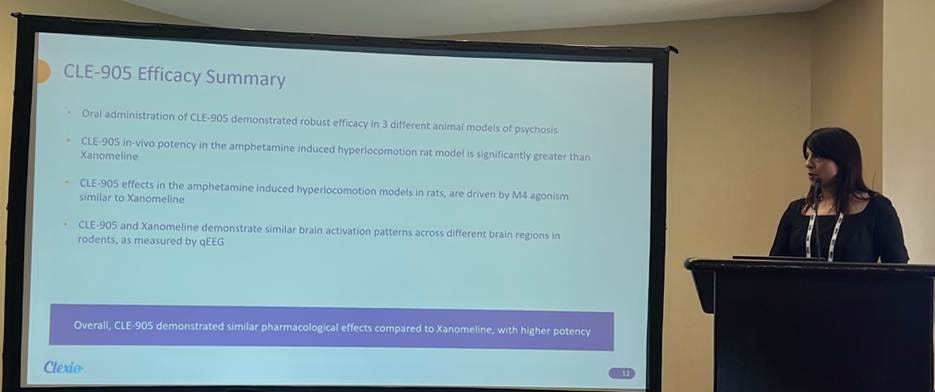
Hadile Ounallah-Saad giving a talk about Clexio’s lead compound CLE-905
My friend Zhong Zhong, CMO for OVID therapeutics gave a superb talk on KCC2 activators as a potential class of antipsychotic medications. My lab is involved in the preclinical side of this endeavor so we’re all hopeful this will end up having some clinical utility!
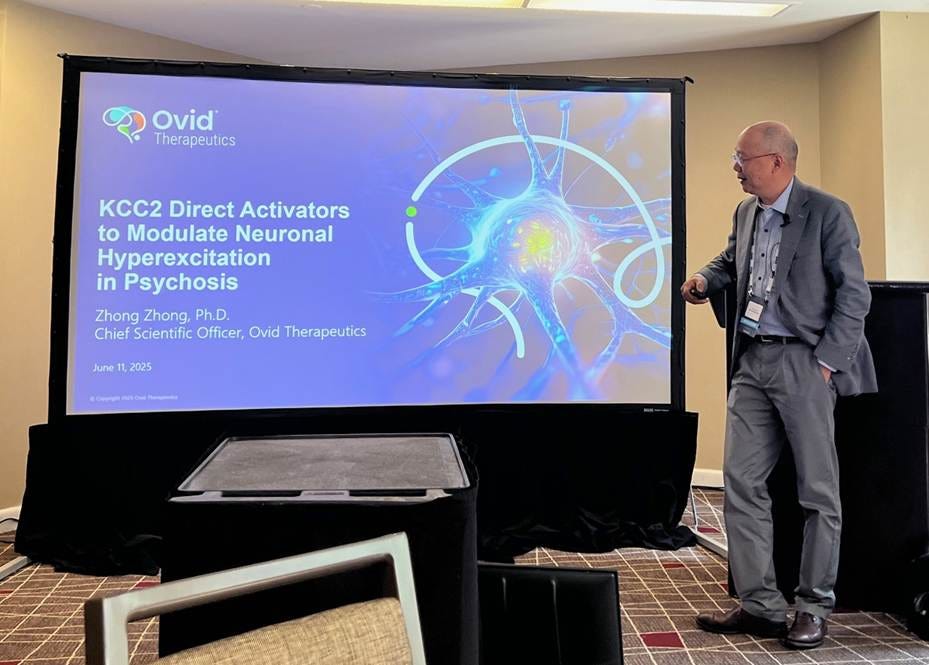
Zhong talking about KCC2 modulators as disease modifying agents in schizophrenia
Throughout the summit, there was palpable energy. After decades of stagnation, the field appears to have finally cracked open. For too long, psychiatric drug development has been stalled by perceived biological intractability and late-stage trial failures where clinical efficacy predicted pre-clinically failed to materialize. But this summit showcased the tools now available to change that trajectory:
- Systems neuroscience informing target selection
- Circuit models guiding conceptual framing
- Sophisticated biomarkers enabling patient stratification
- Digital augmentation expanding therapeutic options
- Novel molecular targets beyond dopamine
The muscarinic wave, exemplified by xanomeline, validates that genuinely novel mechanisms can succeed in psychiatry, while also reinforcing that circuit-level understanding must drive future drug development.
For those of us working in systems and circuits, it seems obvious that this is the type of neuroscience that pharma needs. This is but one of several facets of the algorithm circuit framework we have been working on for the last several years.
I left Boston energized and cautiously optimistic that we are witnessing the dawn of psychiatry’s own precision medicine revolution. The science is finally catching up to the clinical complexity. Now we need the discipline, patience, and collaborative ambition to build on this momentum.
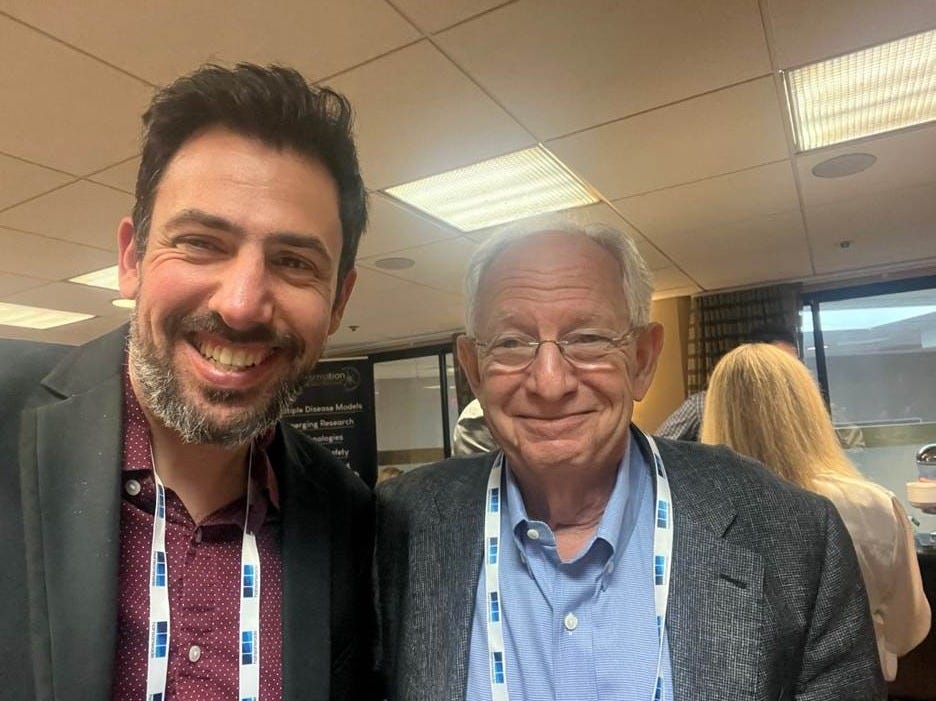
This piece reflects my experience co-organizing the Systems Neuroscience workshop at the 2025 Innovation in Psychosis Therapeutics Summit and observations from three days of presentations, panels, and discussions with leading researchers, clinicians, and industry executives.
